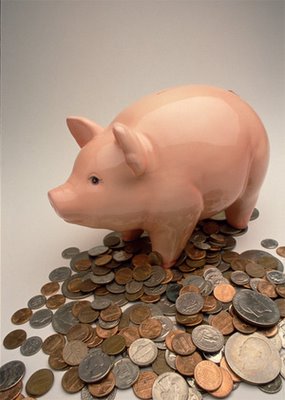Rapid Consumer Spending Helps Push The Savings Rate To Lowest Level Since 1933

Rapid consumer spending helps push the savings rate to lowest level since 1933
KENTROVERSY COMMENT: The manner in which this society has been carefully molded has seen a dramatic rise in consumer debt, which is directly related to the lack of savings that most people in this country do not have. Call this CONSPICIOUS CONSUMPTION --- as the things that people concern themselves with these days are completely unnecessary --- especially when it prevents them from saving any money.
I can remember when I was a young boy in school, we had a savings account that was opened in our name, and every week, I and the other students who participated, brought in our envelope with our savings in it. Now, children are being marketed to by credit card companies, and you can read a report about THAT in the SOURCES section immediately following this news article.
It is absolutely disgusting ... what THEY are doing to our children.
Rapid Consumer Spending Helps Push The Savings Rate To Lowest Level Since 1933
by Martin Crutsinger (Associated Press)
January 30, 2006 11:47am
WASHINGTON — Americans' personal savings rate dipped into negative territory in 2005, something that hasn't happened since the Great Depression. Consumers depleted their savings to finance the purchases of cars and other big-ticket items.
The Commerce Department reported Monday that the savings rate fell into negative territory at minus 0.5 percent, meaning that Americans not only spent all of their after-tax income last year but had to dip into previous savings or increase borrowing.
The savings rate has been negative for an entire year only twice before — in 1932 and 1933 — two years when the country was struggling to cope with the Great Depression, a time of massive business failures and job layoffs.
With employment growth strong now, analysts said that different factors are at play. Americans feel they can spend more, given that the value of their homes, the biggest asset for most families, has been rising sharply in recent years.
But analysts cautioned that this behavior was risky at a time when 78 million Americans are on the verge of retirement.
"Americans seem to have the feeling that it is wimpish to save," said David Wyss, chief economist at Standard & Poor's in New York. "The idea is to put away money for old age and we are just not doing that."
The Commerce report said that consumer spending for December rose by 0.9 percent, more than double the 0.4 percent increase in incomes last month.
A price gauge that excludes food and energy rose by a tiny 0.1 percent in December, down from a 0.2 percent rise in November. This inflation index linked to consumer spending is closely watched by officials at the Federal Reserve.
The central bank meets on Tuesday, when it is expected it will boost interest rates for a 14th time. However, many economists believe those rate hikes are drawing to a close with perhaps another quarter-point hike at the March 28 meeting as the central bank is starting to see the impact of the previous rate hikes in a slowing economy.
The government reported on Friday that overall economic growth slowed to a 1.1 percent rate in the final three months of the year, the most sluggish pace in three years.
That slowdown was heavily influenced by a big drop for the quarter in spending on new cars, which had surged in the summer as automakers offered attractive sales incentives.
A negative savings rate means that Americans spent all their disposable income, the amount left over after paying taxes, and dipped into their past savings to finance their purchases. For the month, the savings rate fell to 0.7 percent, the largest one-month decline since a 3.4 percent drop in August.
The 0.5 percent negative savings rate for 2005 followed a 1.8 percent rate of savings in 2004. The last negative rates occurred in 1932, a drop of 0.9 percent, and a record 1.5 percent decline in 1933. In those years Americans exhausted their savings to try to meet expenses in the wake of the worst economic crisis in U.S. history.
One major reason that consumers felt confident in spending all of their disposable incomes and dipping into savings last year was that a booming housing market made them feel more wealthy. As their home prices surged at double-digit rates, that created what economists call a "wealth effect" that supported greater spending.
The concern, however, is that the housing boom of the past five years is beginning to quiet down with the rise in mortgage rates. Analysts are closing watching to see whether consumer spending, which accounts for two-thirds of total economic activity, falters in 2006 as Americans, already carrying heavy debt loads, don't feel as wealthy as the price appreciation of their homes would seem to indicate.
For December, the 0.4 percent rise in incomes was in line with Wall Street expectations. It followed a similar 0.4 percent increase in November, with both months lower than the 0.6 percent rise in October.
The 0.9 percent rise in spending with slightly above the expectation for a 0.8 percent increase and was almost double the 0.5 percent increase in November.
Sources:
The following sources were used in the creation of this Kentroversy Paper . . .
Rapid Consumer Spending Helps Push The Savings Rate To Lowest Level Since 1933 (January 30, 2006)
Getting The Kids Used To The Cashless Society (January 27, 2006)





0 Comments:
Post a Comment
<< Home